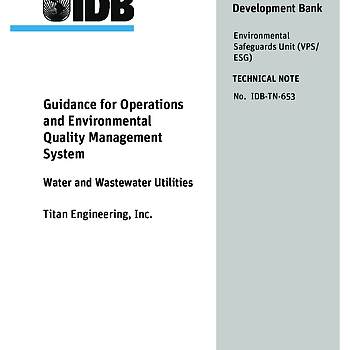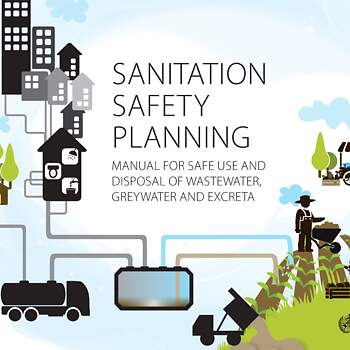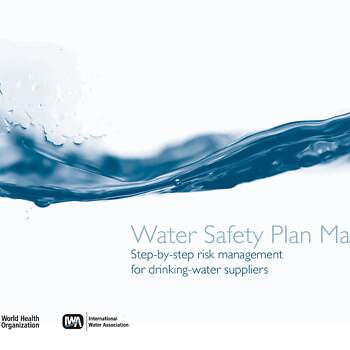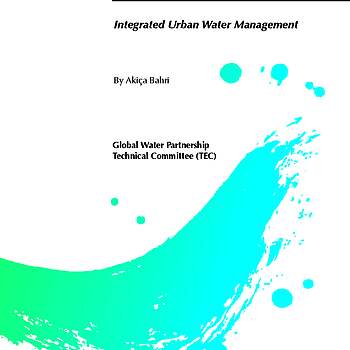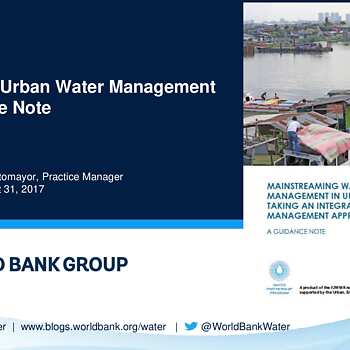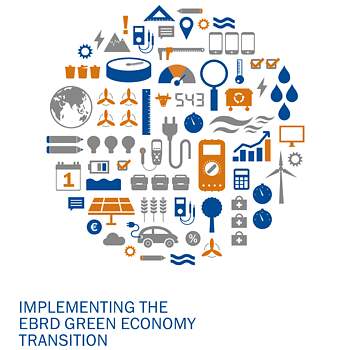Environmental Management Systems (ISO)
Since the 1980's, ISO and multiple international organizations led by the United Nations have recognized the universal need to provide specific guidance to utility operators on the management of water and wastewater utilities in order to improve quality in the delivery of water and wastewater services.
standards were designed to help water utilities meet the expectations of consumers and conform to principles of sustainable development. They provide guidelines for the assessment, improvement and management of water and wastewater services and have been published in English, Spanish and French.
Water and Sanitation Safety plans (WSP and SSP), as recommended by the World Health Organization, offer comprehensive risk-based management tools focusing on preventive measures and emergency response and preparedness planning related to water contamination and climate change risks.
The goal of sanitation safety planning is to minimize contact with fecal matter, and furthermore, to reduce negative health impacts of the use of wastewater, excreta or greywater, while maximizing the benefits (WHO, 2015). The goal of water safety planning is to consistently ensure the safety and acceptability of drinking water supply and to reduce the risk of drinking water contamination (WHO/IWA, 2009).
Climate change is expected to alter the frequency and intensity of weather events and is expected to increase the existing stress on water resources. Water suppliers must consider their resilience to the impacts of climate change and variability both now and into the future. For this WSPs and SSPs are very suited. The combination of the WSP and SSP approach is currently gaining more attention.
https://www.who.int/water_sanitation_health/water-quality/safety-planning/en/
https://www.who.int/water_sanitation_health/publications/publication_9789241562638/en/
https://www.who.int/water_sanitation_health/publications/ssp-manual/en/
Integrated Urban Water Management concept
Integrated urban water management (IUWM) is an approach that challenges the current system, in which water supply, sanitation, stormwater and wastewater are managed by isolated entities, and all four are separated from land-use planning and economic development. IUWM calls for the alignment of urban development and basin management to achieve sustainable economic, social, and environmental goals.
Integrated Urban Water Management (IUWM) considers all water services simultaneously to determine optimal infrastructure solutions. They create many benefits, including unlocking opportunities for water reuse.
IUWM aims to improve the way resources are managed across the urban water cycle by promoting resource diversification and reuse, system efficiency and conservation, while taking account of all water users and related services in the city and wider catchment through broad stakeholder consultation and participation. IUWM can be seen as an integral component of sustainable cities.
http://documents1.worldbank.org/curated/en/633731521818888260/pdf/IUWM-Guidance-Note.pdf
Green Economy Transition Approach (GET)
EBRD’s Green Economy Transition Approach (GET) advances the transition to a green economy and aims to ensure that EBRD projects, and thus the economies within which they take place, reduce reliance on carbon-intensive technologies, are environmentally sustainable, and increase climate resilience.
The GET approach can be applied for a proposed Urban WSS investment. The GET qualification process of the EBRD is applied in 3 stages:
- Stage 1: Identifying projects or project components that meet the GET principles and criteria and are on the positive lists of activities qualifying for GET or covered by the climate change adaptation approach
- Stage 2: Assessing the physical environmental benefits of the GET projects and project components
- Stage 3: Confirming the proportion of GET finance and GET benefits of a project and explaining how these fit into the GET strategy, as well as examining other contributing factors and total GET benefits
